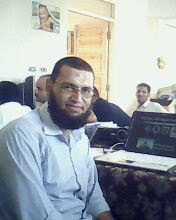| The US Bureau of Labor Statistics estimates that more than a |
| work with kids for anything |
| |
| million and a half Americans made their livings as elementary |
| school teachers in 2008, and predicted steady but unspectacular |
| growth in the profession over the next seven years. The Bureau |
| recently forecasted a net increase, by 2016, of 209,000 jobs. |
| The outlook for teachers has worsened in some states since |
| then as the recent recession has put concerted fiscal pressure |
| on the states, causing budgetary shortfalls that have sometimes |
| led to job cuts and dismissals. |
| have shed about 30,000 teaching and administrative jobs in |
| 2008 and 2009. |
| At the same time, demographic trends at work below the radar |
| are heartening for prospective teachers‘ longer |
| -term prospects, |
| since large numbers of baby boomers are slated to retire from |
| the profession over the next decade, and will have to be |
| replaced by younger colleagues. |
| 5 |
| BEING AN ELEMENTARY SCHOOL TEACHER: |
| REAL-WORLD TIPS AND STORIES FROM WORKING TEACHERS |
| TEACHER |
| More than in the past, the positions new teachers fill will be |
| cooperative and specialized. For better or worse, schools rely |
| more heavily than ever on adjuncts and on teamwork |
| – |
| on reading |
| TIP |
| specialists, literacy coaches, emotional adjustment counselors and |
| committees made up of all three |
| – |
| to cope with changes in the |
| school-age population and to help the schools adjust to changes in |
| their role. For the time being, the majority of grade school |
| teachers are still generalists who teach an array of subjects, |
| including the Three R‘s. But they are supplemented now by |
| Be open to making |
| |
| language teachers, music and art teachers, computer and |
| technology instructors, guidance and mental health advisors and |
| special education teachers. |

0 comments:
Post a Comment